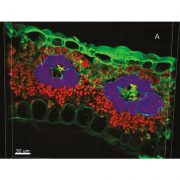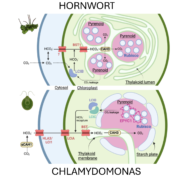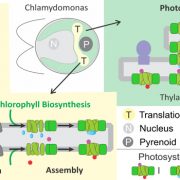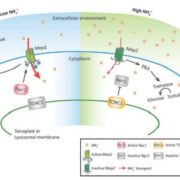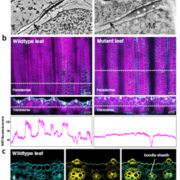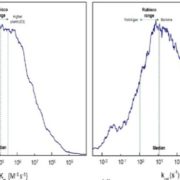Dark-Induced Leaf Senescence
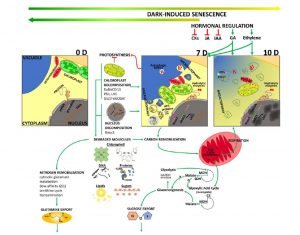 Senescence in plants is a prelude to cell or organ death. The metabolites and macromolecules released during senescence are salvaged by the plant for use elsewhere. Generally, senescence occurs prior to programmed cell death (PCD), since the characteristic leaf yellowing can be reversed while PCD is a terminal, irreversible program. Programmed cell death in plants is a sequential process that includes apoptosis-like necrosis and autophagy. Dark-induced leaf senescence (DILS) is an extreme example of shading that induces leaf senescence similar to that observed during normal plant development. Sobieszczuk-Nowicka et al. (10.1104/pp.18.00516) have utilized DILS as a model to examine early and late events in barley (Hordeum vulgare) leaf senescence. They present transcriptomic, cytological and physiological data that reveal the sequential events of DILS, and how it differs from developmental senescence. They also examine the time limit for the reversal of the senescence process by returning the leaves to illuminated conditions, and the progression of DILS through autophagy into the PCD phase. A chlorophyll fluorescence vitality index was determined to be the earliest parameter that correlated well with the cessation of photosynthesis prior to autophagy and the initiation of DNA degradation. DILS was characterized by an upregulation of processes that enable recycling of degraded macromolecules and metabolites. Reversal of DILS by re-exposure of the plants to light was possible until but not later than day 7 of dark exposure.
Senescence in plants is a prelude to cell or organ death. The metabolites and macromolecules released during senescence are salvaged by the plant for use elsewhere. Generally, senescence occurs prior to programmed cell death (PCD), since the characteristic leaf yellowing can be reversed while PCD is a terminal, irreversible program. Programmed cell death in plants is a sequential process that includes apoptosis-like necrosis and autophagy. Dark-induced leaf senescence (DILS) is an extreme example of shading that induces leaf senescence similar to that observed during normal plant development. Sobieszczuk-Nowicka et al. (10.1104/pp.18.00516) have utilized DILS as a model to examine early and late events in barley (Hordeum vulgare) leaf senescence. They present transcriptomic, cytological and physiological data that reveal the sequential events of DILS, and how it differs from developmental senescence. They also examine the time limit for the reversal of the senescence process by returning the leaves to illuminated conditions, and the progression of DILS through autophagy into the PCD phase. A chlorophyll fluorescence vitality index was determined to be the earliest parameter that correlated well with the cessation of photosynthesis prior to autophagy and the initiation of DNA degradation. DILS was characterized by an upregulation of processes that enable recycling of degraded macromolecules and metabolites. Reversal of DILS by re-exposure of the plants to light was possible until but not later than day 7 of dark exposure.


